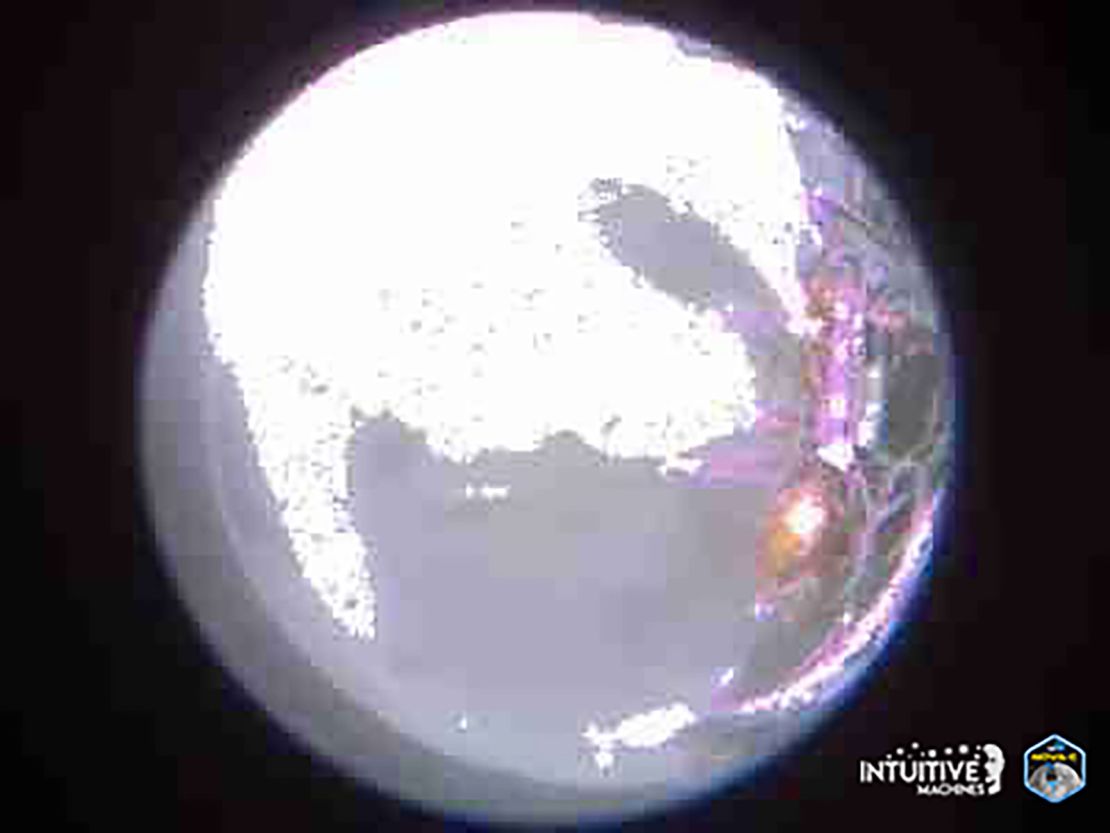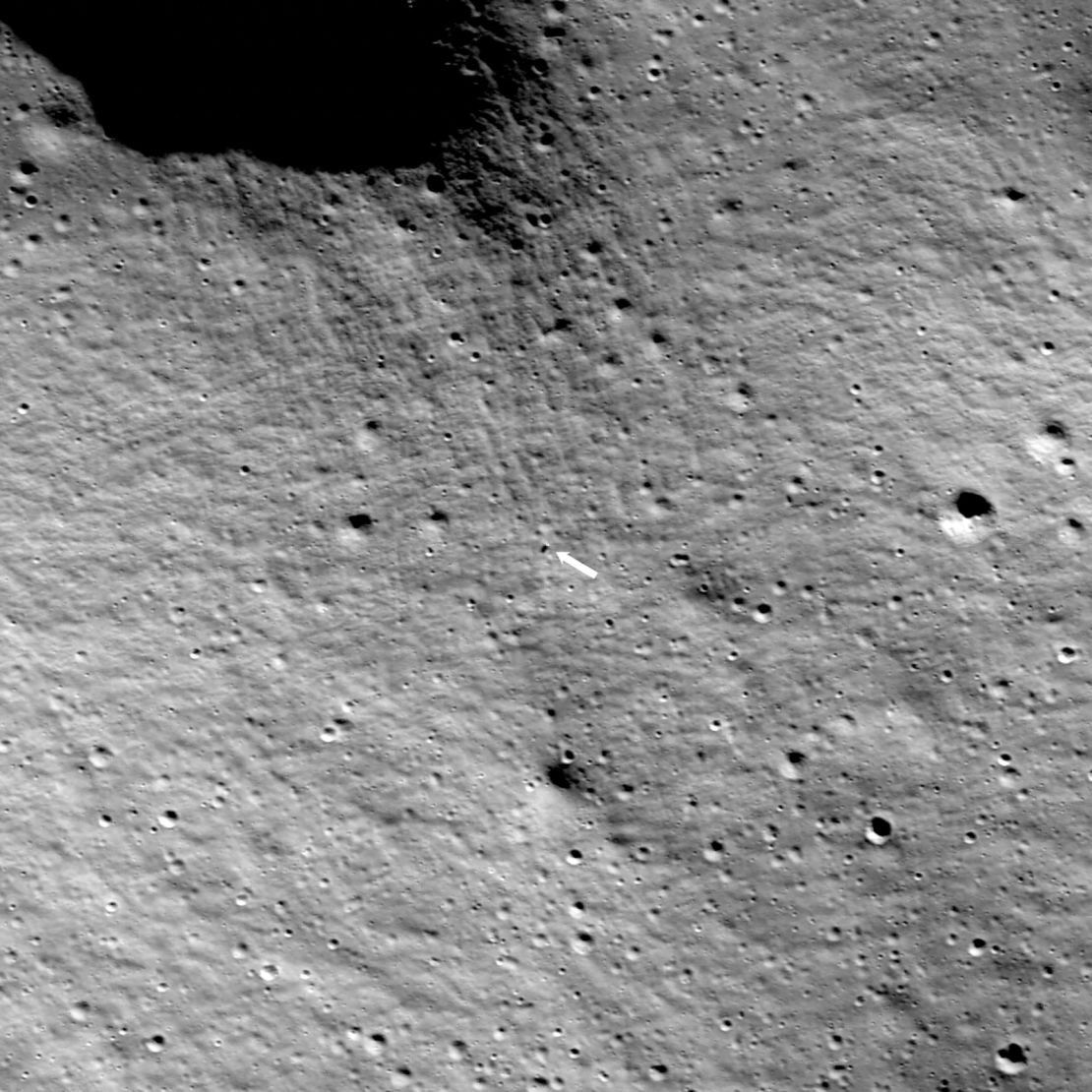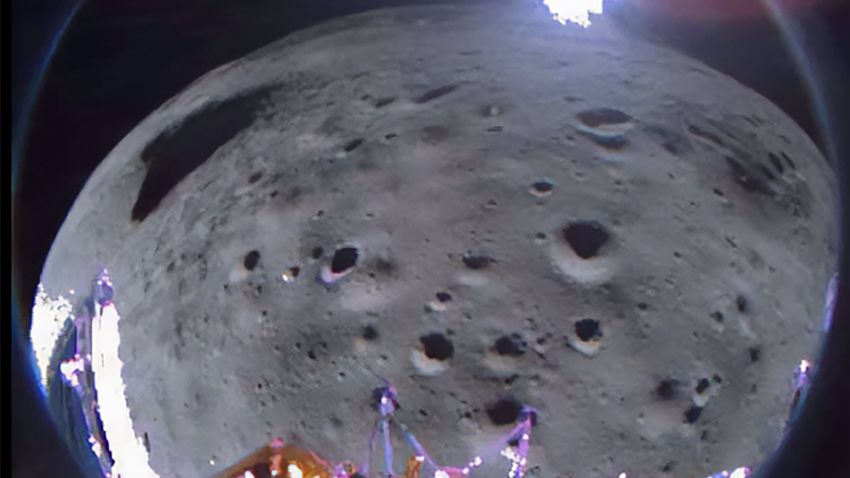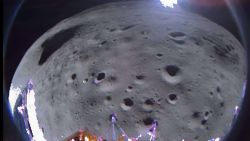Sign up for CNN’s Wonder Theory science newsletter. Explore the universe with news on fascinating discoveries, scientific advancements and more.
The Odysseus spacecraft has dispatched new images it captured of the lunar surface during the lander’s harrowing approach to the moon. The vehicle softly touched down on the moon on Thursday, becoming the first US-made lander to do so since the Apollo era.
The grainy images were shared by Intuitive Machines, the company that developed Odysseus, on Monday morning. The company had initially projected that the lander could deliver the first images captured from the lunar surface in the hours after landing, but communicating with the spacecraft has proven challenging.
The mission team believes Odysseus tripped on the lunar soil and landed on its side, resting on a rock, which may have left some of the vehicle’s antennas pointed in an inopportune direction, Intuitive Machines revealed Friday.
In its update Monday, the company also said it now expects to lose contact with Odysseus on Tuesday — days earlier than initially hoped.
“Flight controllers intend to collect data until the lander’s solar panels are no longer exposed to light,” the company said in the update posted on the social media platform X. “Based on Earth and Moon positioning, we believe flight controllers will continue to communicate with Odysseus until Tuesday morning.”
At that point, Odysseus will have been operating less than five days on the lunar surface. The company had suggested in previous updates that the lander could function for up to nine days.
What Odysseus’ images reveal
An image released by company Friday showed a view of the moon’s Schomberger crater captured by the spacecraft during its descent.
The images shared Monday give another glimpse at Odysseus’ trip.
“Odysseus captured this image approximately 35 seconds after pitching over during its approach to the landing site,” the company said about the clearer of the two photographs from the spacecraft shared Monday on X.
The spacecraft was expected to “pitch over” — turning itself upright after moving horizontally through space — just before landing.
“The camera is on the starboard aft-side of the lander in this phase,” the Intuitive Machines post noted, referring to the right rear portion of the vehicle.

NASA’s Lunar Reconnaissance Orbiter, or LRO, which has been circling the moon since 2009, also captured an image of Odysseus’ landing site from afar.
Intuitive Machines shared Odysseus’ precise location: The spacecraft is sitting at the coordinates 80.13°S and 1.44°E on the moon, resting at about 2,579 meters (8,500 feet) in elevation.
The company says the vehicle landed within 1.5 kilometers (5,000 feet) of its intended landing site, “representing the furthest south any vehicle has been able to land on the Moon and establish communication with ground controllers.”

On board Odysseus are six science and tech demonstration payloads from NASA, which the space agency paid Intuitive Machines — via a contract worth up to $118 million — to fly to the lunar surface.
Odysseus also carried a few pieces of cargo from the private sector, including a work of art and a camera, called EagleCam, that was designed to pop off the lander and capture a “selfie” of the spacecraft during its final descent.
EagleCam — which was designed by students at Embry-Riddle University in Florida — was not ejected, however, because of last-minute navigation issues, which required the lander to rely on experimental hardware from NASA.
Teams on the ground are still working through how EagleCam might be deployed now that it’s known that Odysseus is lying on its side.
“Telemetry data confirms that the Embry‑Riddle CubeSat is still fully operational, however, and the team now intends to deploy its camera system to capture imagery of the lander in its current state, offering valuable data that could help Intuitive Machines refine its plans moving forward,” Embry-Riddle said in an update on Sunday.























